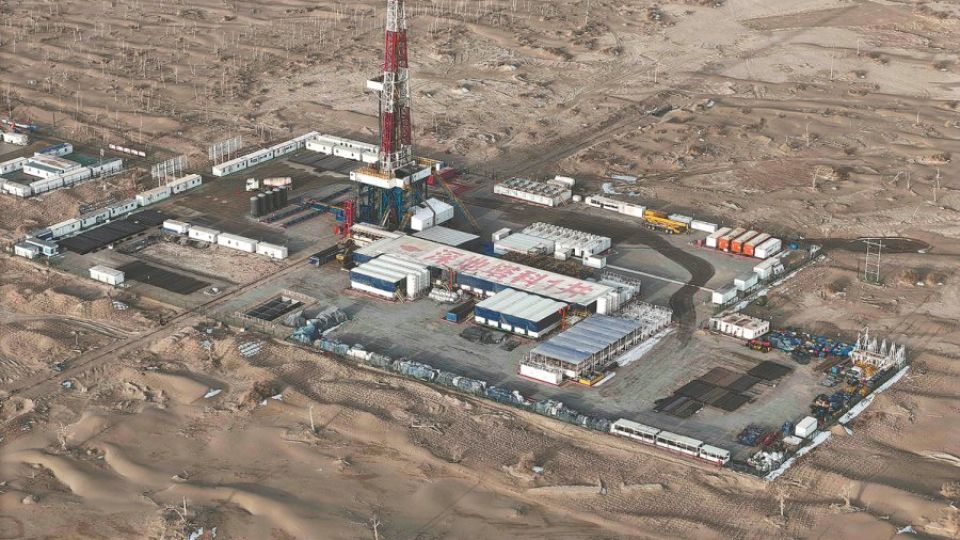February 21, 2025
BEIJING – The drilling of China’s first ultra-deep scientific exploration well, Shenditake 1, has been completed at a depth of 10,910 meters, making it the deepest vertical well in Asia and the second-deepest in the world, China National Petroleum Corp, the well’s operator, said on Thursday.
The successful drilling of the scientific exploration well in the Tarim oilfield is a milestone in China’s deep-Earth scientific research and ultra-deep oil and gas exploration, said Wang Chunsheng, chief expert of CNPC’s Tarim oilfield, which was in charge of the drilling.
As China’s first scientific exploration borehole designed to exceed a depth of 10,000 meters, the project not only enriches China’s engineering and technical expertise in drilling, but also provides a solid technological foundation for pushing the limits of deep-Earth exploration and developing ultra-deep oil and gas resources, Wang said.
The project in Northwest China’s Xinjiang Uygur autonomous region proves that China’s key core equipment and technologies for ultra-deep wells can withstand the extreme conditions of ultra-deep drilling, he added.
According to CNPC, the project sets five global engineering records, including for deepest cable imaging logging and fastest onshore drilling to exceed 10,000 meters.
Hao Fang, an academician of the Chinese Academy of Sciences, said that as the Tarim Basin is located between the Tianshan Mountains and the Kunlun Mountains, it is one of the most difficult areas to explore due to its harsh ground environment and complicated underground conditions.
The implementation of deep-Earth engineering is expected to unlock new resource replacement zones and contribute to enhancing China’s energy security, he said.
China’s oil giants have been stepping up efforts in domestic oil and gas exploration and exploitation in recent years, aiming to further enhance the nation’s energy security.
As a result, China’s external oil procurement ratio dropped 0.5 percentage point last year to 71.9 percent, according to industry data.
In addition, China’s crude oil imports fell 1.9 percent in 2024, totaling 553.4 million metric tons, equivalent to 11.04 million barrels per day, compared with the 2023 record of 11.28 million barrels per day, according to the General Administration of Customs.
The nation’s accelerated technological advances in recent years in oil exploitation in different spheres have greatly contributed to its reduced dependence on imported oil.
China’s push to boost domestic oil and gas production is a strategic move to reduce dependence on imports and strengthen energy security amid volatile global energy markets and geopolitical uncertainties, said Lu Ruquan, head of CNPC’s Economics & Technology Research Institute.
The drilling, which began on May 30, 2023, is not only a milestone in the country’s energy and resource development, but also a reflection of its advancing technological capabilities in ultra-deep drilling, an area historically dominated by global energy giants, Lu said.


